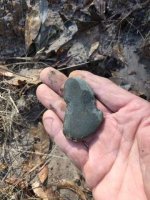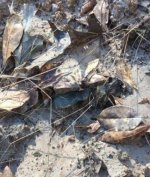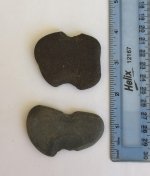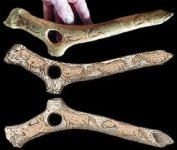The grooved palm type may be common up north but this kind is a crazy uncommon find for South Louisiana!
Nearly none like this type are found in Louisiana as far as I know and it seems it would fit a pretty large shaft.
And - it was found about a mile from the ONLY other of this type that I've ever found --- in a pile of spoil dirt left by diggers! Looked like they dug hard at 4-5 feet deep sometime last year and this may have been tossed in the big shovel fulls of overburden. This particular area has been completely turned over several times over the years but stuff still pops out now and again...
In all my years of looking I've only found 4-5 more made of either chert or sandstone and a couple of those are kind of questionable - these sure aren't!



Nearly none like this type are found in Louisiana as far as I know and it seems it would fit a pretty large shaft.
And - it was found about a mile from the ONLY other of this type that I've ever found --- in a pile of spoil dirt left by diggers! Looked like they dug hard at 4-5 feet deep sometime last year and this may have been tossed in the big shovel fulls of overburden. This particular area has been completely turned over several times over the years but stuff still pops out now and again...
In all my years of looking I've only found 4-5 more made of either chert or sandstone and a couple of those are kind of questionable - these sure aren't!



Last edited:
Upvote
0







